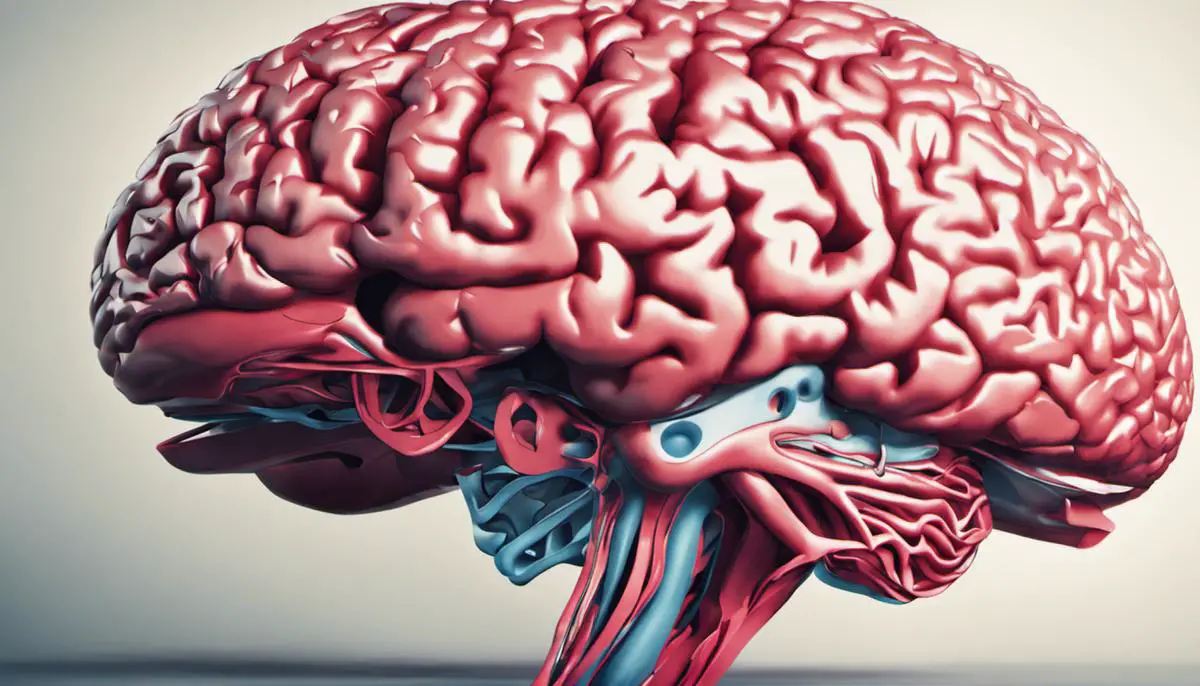The complexities of the human brain and its myriad functions remain an ever-evolving field of study. One such realm that demands elucidation in relation to brain’s functioning and pharmacology is the interplay between antidepressants, particularly Lexapro, and dream recall. As a prominent member of Selective Serotonin Reuptake Inhibitors(SSRIs), Lexapro engenders both physiological as well as psychological changes in users. Crucially, its role and impact on the normal sleep cycle, and consequently, dream recall, form an intriguing area of research. This exposé aims to provide an in-depth understanding of Lexapro’s mechanism, the effects of its usage on the sleep cycle, and further, how this links to our ability to recall dreams.
Understanding Lexapro: Composition and Functioning
The Essential Components of Lexapro and their Functionality
Lexapro, marketed under the scientific name escitalopram, epitomizes a significant stride in the arena of pharmaceutical remedies for psychiatric disorders like depression and generalized anxiety disorder. Comprehending its cardinal components and their functioning mechanisms elucidates its efficacy and catapults the understanding of the delicate interplay of biomedical science and human psychology.
The central element of Lexapro is the active ingredient escitalopram oxalate, a selective serotonin reuptake inhibitor (SSRI). This chemical entity blocks the reabsorption or reuptake of the neurotransmitter serotonin in the brain, which tends to be lower in individuals suffering from depression. By impeding this reabsorption, Lexapro increases the concentration of serotonin in the synaptic cleft, the space between neuron circuits. Consequently, more serotonin becomes available to either be reabsorbed or attach to other receptors, potentially ameliorating mood disorders.
In addition to escitalopram oxalate, Lexapro also contains several inactive ingredients like microcrystalline cellulose and magnesium stearate, which function as vital fillers and binders. These components ensure the stability of the drug and enhance its absorption in the human body.
Diverse and specific manifestation of a patient’s symptoms guides the dose of Lexapro prescribed, so it is available in two dosing formats: tablet form and oral solution. Both forms contain the same active ingredient, escitalopram oxalate, but the oral solution also contains sorbitol, purified water, and other additives—it does not contain sugar and should be cautiously consumed by diabetic patients.
Lexapro’s efficacy in improving depression or anxiety is not instantaneous. It is reported to take two to four weeks for the initial therapeutic effects to be apparent, and 6-8 weeks for the complete manifestation of benefits. This delay is attributed to the time it takes for the brain to adapt to increased serotonin levels.
The pharmacokinetics of Lexapro – absorption, distribution, metabolism, and excretion – are affected by a variety of patient factors such as age, kidney, and liver function, but these alone do not generally necessitate initial dosage adjustments. However, the individualized manifestation of the drug’s efficacy and tolerability may motivate such modifications over time.
In conclusion, recognizing the essential components of Lexapro and comprehending their function remains pivotal to the appropriate therapeutic use of this medication. Lexapro encapsulates the synergy of the potent active ingredient, escitalopram oxalate, with numerous inactive elements to create a stable and effective means of modulating serotonin levels in the human brain, thereby potentially ameliorating symptoms of depression and anxiety. An understanding of these fundamental concepts enriches the field of medical science and highlights the endless possibilities for improved health outcomes in the realm of psychiatric care.

Effects of Lexapro on Normal Sleep Cycle
Further delving into the realm of Lexapro’s impact on physiology, one may find a keenly fascinating intersection when considering its influence on our sleep cycle. Sleep, a fundamental biological process, is characterized by oscillating patterns germinated from a complex interplay of various brain regions, neurotransmitters, and hormones. An intricate connection exists between sleep and the serotonin system, which is the primary target of escitalopram, the active ingredient in Lexapro.
Adopting the lens of intricate neuropharmacology, it becomes palpable that Lexapro has the potential to modify sleep architecture, an organized structure that regulates the sequence, depth, and duration of various sleep stages, mainly via its effects on serotonin. The influence of serotonin is especially noticeable on the entrainment and regulation of the circadian rhythm, that biological clock impacting multiple physiological processes, sleep-wake cycles being a significant one. An elevation in serotonin levels, as facilitated by Lexapro, has the potential to reset or shift the circadian rhythm, demonstrating a profound impact on sleep patterns.
Examining the effects of Lexapro on specific sleep stages provides a finer mesh of understanding. Pronounced alterations have been noted in the rapid eye movement (REM) sleep, the stage associated with vivid dreaming and cognitive processes. A body of research suggests that SSRIs, including escitalopram, can lead to delayed onset, reduced duration, and intensity of REM sleep. This calls attention to a REM sleep suppression effect, a common observation amongst SSRIs and other antidepressants usage. Conversely, an increase in the duration of slow-wave sleep, the deep, restorative sleep stage, has been documented – elucidating the other facet of Lexapro’s alteration of sleep architecture.
Apart from structural modifications, an equally compelling aspect of study is Lexapro’s influence on sleep anomalies. For some patients, Lexapro alleviates conditions like insomnia, acting as a sedative to promote sleep, while for others, it may induce sleep disturbances, causing issues such as restlessness and difficulties in falling asleep. The paradoxical influence underscores the inter-individual variability in psychotropic responses and warrants in-depth investigation into factors including genetic predispositions, drug dose, duration of therapy, and concurrent medication.
As Lexapro operates in unison with our internal orchestra of neurotransmitters, differently-pitched notes of sleep pattern alterations emerge from the concert of its pharmacological scores. It is not merely the presence of escitalopram that casts these changes. Instead, it is its intricate interaction with numerous players in the grand theater of neurobiology, making up an intriguing and all-encompassing saga in sleep modulation.

Dream Recall and its Mechanisms
Exploration into dream recall can shed light on the elusive nature of our sleep.
The intricacies bound within dream recall mechanisms and variables that shape these foster an understanding that goes beyond the simple act of sleeping.
To further delve into this topic, it is pivotal to touch upon the mechanism of memory encoding and retrieval, in general, as this can bring an insightful link connecting it with dream recall.
Dreams, quite mysteriously, occur primarily during the Rapid Eye Movement (REM) stage of the sleep cycle.
There, the neurological activities bear semblance to the awake state, thus fostering an optimal environment for vivid dreaming.
A crucial element in dream recall is indeed the REM sleep stage, with researchers witnessing frequent accounts of dream recall upon awakening from this stage.
Moreover, neurotransmitters regulating REM sleep also play a significant role in dream recall.
Interestingly, an upsurge in serotonin, which Lexapro aims to facilitate, can suppress REM sleep.
This particular facet opens an avenue for exploration in the possible implication of Lexapro on dream recall.
Expanding further, the hippocampus – a crucial region for memory processing – shows increased activity during REM sleep.
It is worthy to emphasize that the recall of dreams essentially is a form of declarative memory task, something which the hippocampus is involved in.
Concerning factors that could potentially sway dream recall, it becomes imperative to highlight the role individual differences can play.
It has been noted that a high frequency of dream recall is associated with certain personality traits such as openness to experience, creativity, and emotional sensitivity.
The locus coeruleus-norepinephrine (LC-NE) system that plays a role in mediating attention also merits discussion when considering dream recall.
This system shows inactivity during REM sleep but reactivates upon awakening.
This might offer a plausible explanation as to why one tends to recall a dream if awakened during this phase.
Sleep fragmentation is another essential aspect that influences dream recall.
Awakenings, however brief during the night, can lend a greater chance of dream recollection.
As such, insomnia sufferers tend to exhibit higher dream recall frequencies.
Lastly, it is important to pay heed to the impact of daytime stress on dream recall.
An increase in daytime stress can prompt the recall of dreams.
However, a high stress level can also disrupt sleep architecture, leading to sleep deprivation and subsequently affecting dream recall adversely.
In conclusion, dream recall reflects a multifaceted interplay between several mechanisms and factors.
The influence ranges from neurological to psychological spheres, establishing an imbricated structure that remains a challenging, albeit fascinating realm to navigate within the domain of sleep science.
This paints a wider picture embedding Lexapro within a matrix of complex chemical, neurological, and psychological interactions that can potentially influence dream recall.

Interrelation between Lexapro usage and Dream Recall
Delving deeper into the ability to recall dreams on one receiving Lexapro, it is pivotal to scrutinize the manner in which this psychoactive substance influences such faculties. Existing literature suggests that antidepressants, like Lexapro, that augment serotonin levels, can have a profound effect on rapid eye movement (REM) sleep, the phase of sleep when most vivid dreaming occurs.
Lexapro, being an SSRI, inhibits the reuptake of serotonin in the brain, thereby increasing its availability. Since serotonin plays a critical role in sleep modulation, particularly in preventing the entry into REM sleep, the introduction of Lexapro alters sleep architecture. The suppression of REM sleep duration, often observed in initial stages of using SSRIs, could inadvertently affect the dream phase, potentially impacting the capacity to recall dreams.
An interesting tangent that demands attention in this discourse is the complex pathway of memory formation and retrieval. The hippocampus, the brain’s memory center, exhibits heightened activity during REM sleep, presumably replaying information from the day which consolidates into long-term memory – a mechanism key to memory encoding and retrieval. In this context, the altered REM sleep stage due to Lexapro may disrupt this data replay and consequent encoding, thus affecting the dream recall process.
Moreover, the neuronal activity during REM sleep associated with vivid dreaming may be altered with the introduction of Lexapro. Therefore, the resultant change on the neuronal circuitry could lead to changes in dream vividness, which, in turn, may influence dream recall.
It is also important to consider the concept of “sleep fragmentation”, a condition characterized by frequent awakenings and varying durations of sleep stages. As SSRIs like Lexapro can induce sleep fragmentation particularly in early treatment phases, this can facilitate dream recall upon sudden awakenings from REM sleep, as is more common in fragmented sleep sequences.
However, it is equally significant to highlight the inter-individual variability in dream recollection. Individual personality traits, genetic variations, and even variations in the locus coeruleus-norepinephrine system which mediates attention, can influence dream recall. Furthermore, the role of daytime stressors, which can modulate brain neurochemistry and thus influence one’s dream landscape and subsequent recall capability, cannot be ignored in this intricate interplay.
To surmise, the introduction of Lexapro can change one’s dream recall ability through its actions on the serotonin system, REM sleep, and potentially, memory processing. However, this association doesn’t follow a linear cause-effect relationship but is rather embedded in a web of multifaceted interactions involving multiple neurotransmitter systems, individual personality traits, and external stressors. As research in this intriguing domain progresses, more definite answers may be found linking antidepressant use, sleep, and dream recall.

Analyzing the implications of Lexapro-induced changes in dream recall
Emerging from an empirical understanding of Lexapro’s composition, mode of action, and influences on both sleep and dream recall, one can engage with the more practical sphere of real-world implications. As an integral part of human experience, dreams can shape emotional state, decision-making, creativity, and overall wellbeing. Thus, the potential alterations in dream recall induced by Lexapro could have considerable psychological and social implications.
The enhancement of REM sleep due to increased serotonin levels under the influence of Lexapro may lead to a more vivid dream experience. As dream intensity increases, users may find memory of their dreams easier to access. This enhanced dream recall and increased dream vividness may affect emotional processing, potentially leading to increased emotional resilience. Lexapro, thus, may inadvertently contribute to emotional development by enriching individual’s capacity to experience, remember, and process emotional content of dreams.
The variables surrounding Lexapro’s alterations of REM sleep and dream recall could expand our understanding of the relationship between psychiatric medication and creative cognition. Particularly, the increased vividness and recollection of dreams may boost creativity, given the neuroscience-backed association between REM sleep and creative problem-solving abilities. Lexapro’s users may find themselves more creatively engaged or solution-oriented, fostering not just individual creativity but potentially fueling innovation in collective settings such as the workplace or educational institutions.
Lexapro’s potential impact on dream recall could also pave the way for innovative therapeutic strategies. Psychotherapists, for instance, may adapt dream therapy techniques for patients on Lexapro, leveraging enhanced dream recollection to facilitate cognition and emotional strategies.
On the other hand, being thrust into vibrant dreams and increased dream recall might not always foster positive outcomes. Some individuals may experience distressful dreams or nightmares, leading to sleep disruptions or even associations between bed and stress in worst-case scenarios. The potential of distressful dream content to bleed into waking hours could cause stress, anxiety, or mood disruptions during daytime.
Further, sleep fragmentation induced by SSRIs like Lexapro could potentially degrade dream recall, owing to the compromised quality of sleep stages. It is important to consider that any changes to dream recall could be unique to the individual, influenced by a complex blend of their personality traits, stress level, sleep-wake routine, polypharmacy, and presence of comorbid conditions.
In summary, changes in dream recall induced by Lexapro could exhibit a multifaceted range of impacts on individuals’ emotional processing, creativity, therapeutic strategies, quality of sleep, and daytime mood. Intricate as these implications are, they symbolize the quantum leaps being made in our understanding of intricate neuro-pharmaco-dynamic interactions. With increased comprehension of the human brain’s response to pharmacotherapeutics, the hope remains that such knowledge will guide us towards improving mental health outcomes in society. Through a policy of continual scientific inquiry, pharmacists, researchers, and clinicians endeavour to make this hope a reality.

Photo by dollargill on Unsplash
Our comprehension of dreams and the brain’s potential to recall them has been reformed and refined through our continuous encounter with drugs like Lexapro. The discernable connection between Lexapro usage and dream recall, both as independent occurrence and a collective process, offers a compelling perspective on brain functioning. It’s important to realize that the manipulation of sleep and dream recall might bear both benefits and detriments, requiring careful consideration in both therapeutic and day-to-day contexts. The way forward in this dynamic field of study promises to render even more profound insights that can assist individuals to effectively navigate their experiences, thereby achieving a more comprehensive mental health understanding.
